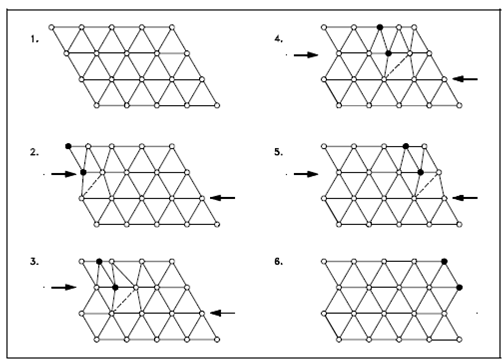Slips:
The slip occurs while the crystal is subjected to a stress, and the dislocation moves by the crystal until it reaches the edge or is arrested through another dislocation, as display in Figure. Position 1 displays a common crystal structure. Position 2 displays a force applied from the left side and a counterforce applied from the right side. Positions 3 to 5 displays how the structure is slipping.
Position 6 displays the last deformed crystal structure. A slip of one active plane is ordinarily on the sequence of 1000 atomic distances and, to generate yielding; slip on several planes is needed.

Figure: Slips
Screw dislocations can be produced by a tearing of the crystal parallel to the slip direction. It would show a slip pattern similar to that of a screw thread if a screw dislocation is followed all the way around a complete circuit. The pattern might be either left or right handed. That requires that some of the atomic bonds are re-formed continuously so that the crystal has almost the same form after yielding that it had before.